A marriage certificate provides official documentation of a legal union between two people. While not legally required, having this document offers newlyweds an important record of their matrimony. A high-quality marriage certificate template allows couples to create a customized, decorative keepsake that validates their wedded bliss.
This article will explore the meaning behind marriage certificates and provide free printable templates to start your personalized design. With a little creativity, you can build a unique marriage certificate to proudly exhibit in your home and preserve alongside other wedding memorabilia. Let’s get started designing a beautiful certificate to commemorate your special day.
Table of Contents
What Is a Marriage Certificate?

A marriage certificate is an official record that documents a legal marriage between two people, serving as proof that they have entered into wedlock. Issued by a governmental authority like a county clerk’s office, a marriage certificate contains information such as the couple’s names, the date and location of the wedding ceremony, witnesses, person who solemnized the marriage, and sometimes additional details like ages, occupations, and residences.
While not required, a marriage certificate is an important legal document that spouses can use to prove their marital status for tax purposes, insurance benefits, inheritance claims, and more. Couples request certified copies of the marriage certificate after the wedding to have evidence of their legitimate union.
Marriage Certificate Templates
A marriage certificate template allows couples to create a customized, decorative marriage certificate to display and commemorate their wedding day. The template has traditional marriage certificate elements.
The template typically features an ornate border design. The names of the married couple go at the top followed by the wedding date and location. Some templates allow you to upload photos of the bride and groom. Underneath is formal language certifying the marriage along with lines for the officiant and witness signatures.
Couples can customize template details like fonts, colors, and wording to match their wedding style. More modern templates may have a simpler, cleaner look with minimalist details. Traditional templates go for an elegant formal style.
Once finalized, the customized marriage certificate template can be printed on high quality paper or canvas. This makes a thoughtful, personal gift to display in the couple’s home. It serves as a keepsake to cherish their wedding day.
Why Should You Have A Marriage Certificate?
Marriage Certificate’s significance transcends the simple act of documentation. Here are some detailed and deep reasons why it’s important to have a marriage certificate:
- Legal Proof of Marriage: This is the most obvious reason. A marriage certificate is a formal and legal proof that two individuals are married to each other. Without it, one might find it challenging to prove the existence of a marriage in a court of law or any official setting.
- Spousal Rights and Benefits: A marriage certificate is often required to claim various benefits that come with being a spouse, such as health insurance benefits, pension benefits, spousal social security benefits, and others. Without this certificate, you may face difficulties when trying to assert these rights.
- Name Change: For individuals who wish to change their surname post-marriage, a marriage certificate is usually required as documentation to facilitate this process, whether it’s with the DMV, Social Security Administration, or other entities.
- Travel and Immigration: If one spouse is from another country, the marriage certificate can play a crucial role in visa and immigration processes. Many countries require a marriage certificate as evidence of a genuine relationship when applying for spousal visas or residency.
- Taxation: Some countries offer tax breaks or specific benefits for married couples. A marriage certificate may be needed to avail of such privileges.
- Estate Planning and Inheritance: In the absence of a will, a marriage certificate can be vital in proving one’s claim to the deceased spouse’s assets. It ensures that the surviving spouse gets the rights and protections under the law.
- Protection in Disputes: In unfortunate events like disputes or disagreements between partners, a marriage certificate can provide protection, especially if one party tries to deny the marriage’s existence.
- Social Recognition: While societal values and norms are evolving, many societies and cultures still regard a marriage certificate as a symbol of commitment and legitimacy. Having one can sometimes avoid unnecessary societal disputes or discussions.
- Protecting Rights of Children: In some jurisdictions, the legal status of a child could be affected by the marital status of their parents. A marriage certificate can play a role in securing rights for children, especially concerning inheritance or legitimacy issues.
- Financial Transactions: Some financial transactions or applications, such as joint home loans or mortgages, may require proof of marriage.
- Making Decisions in Emergencies: In medical emergencies where one spouse might be incapacitated, the other spouse typically has the right to make critical decisions. A marriage certificate can quickly establish this relationship, especially when time is of the essence.
- Emotional Security: Beyond the tangible benefits, having a marriage certificate provides a sense of security and commitment for many. It’s a physical testament to a promise made and can be a source of emotional and psychological comfort.
What Information Is Included In A Marriage Certificate?
The information included can vary by jurisdiction and country, but generally, the following details are found in most marriage certificates:
- Names of the Parties: Full legal names of both individuals getting married.
- Date of Marriage: The specific day, month, and year when the marriage took place.
- Place of Marriage: Details about where the marriage took place, including the venue, city, and sometimes the state or province.
- Marriage License Number: This is a unique identifier that corresponds to the marriage license issued to the couple before their marriage.
- Names of Witnesses: In many jurisdictions, there need to be one or more witnesses to a marriage. Their names are often recorded on the marriage certificate.
- Name and Title of Officiant: The person who officiated the marriage, whether it’s a minister, priest, judge, or other authorized individual, will have their name and title listed.
- Parental Details: Some marriage certificates will include the names of the bride and groom’s parents, and possibly their places of birth.
- Address of Parties: The current or permanent addresses of both individuals at the time of marriage.
- Birth Details: This can include the birth dates of the bride and groom, and sometimes their places of birth.
- Occupation of Parties: Some certificates may note the occupations of both individuals.
- Marital Status Before the Current Marriage: Especially important in places where previous marital status might affect the legality of the new marriage. This can include details such as “single,” “divorced,” “widowed,” etc.
- Signature of the Parties: Both individuals getting married may be required to sign the certificate as acknowledgment and agreement.
- Signature of the Officiant: The person officiating the marriage will typically sign, verifying that they conducted the ceremony.
- Seal or Stamp: Many official documents, including marriage certificates, will have a seal or stamp (sometimes embossed) from the issuing authority, such as the registrar’s office, to authenticate the document.
- Registration Number: A unique number indicating that the marriage has been registered with the appropriate governmental or local body.
- Remarks/Notes: Any additional remarks or notes about the marriage that may be pertinent or relevant.
- Issuance Date: The date when the certificate itself was issued, which might differ from the marriage date, especially if it’s a copy obtained later.
It’s worth noting that the exact format, design, and content of a marriage certificate can vary widely. Depending on the jurisdiction, additional or fewer details might be present. Always consult the specific requirements and formats of the country or region in which the marriage is taking place or registered.
Marriage License and vs. Marriage Certificate
A marriage license and a marriage certificate are two distinct legal documents related to marriage, but they serve different purposes and are used at different stages of the matrimonial process. Here’s a detailed comparison:
1. Purpose:
- Marriage License:
- It is a permission granted by a legal authority, allowing two people to get married.
- Think of it as an “application” to get married. Without this license, a legally recognized marriage ceremony cannot take place in many jurisdictions.
- Marriage Certificate:
- It is an official record that two people are married.
- This certificate is evidence of the marriage having taken place. It’s akin to a “receipt” or “confirmation” of the marriage.
2. Timing:
- Marriage License:
- Obtained before the marriage ceremony.
- There might be a waiting period between when the license is issued and when the ceremony can occur, depending on local laws.
- Marriage Certificate:
- Issued after the marriage ceremony has taken place and the signed marriage license is returned to the registrar or appropriate authority.
3. Required Signatures:
- Marriage License:
- Typically requires the signatures of the couple intending to get married.
- In some places, it might also require witnesses’ signatures or even a notary.
- Marriage Certificate:
- Generally requires the signatures of the couple, the officiant (person performing the marriage), and sometimes one or more witnesses.
4. Legal Use:
- Marriage License:
- Indicates the intent to marry and gives legal permission for the marriage to take place.
- Typically has an expiration date, which means the marriage must take place within a certain timeframe after the license is issued.
- Marriage Certificate:
- Used to prove the existence of a legal marriage.
- Essential for various purposes such as changing one’s name, filing for joint finances like mortgages or other loans, insurance purposes, and more.
5. Issuing Authority:
- Marriage License:
- Issued by the local county or municipality, usually by the clerk’s office or registrar.
- Marriage Certificate:
- After the ceremony, the completed marriage license (which becomes the marriage certificate) is typically filed with the same local governmental body that issued the marriage license. They then provide an official copy of the marriage certificate.
6. Fees:
- Marriage License:
- There’s typically a fee associated with obtaining a marriage license.
- Marriage Certificate:
- There might be an additional fee to obtain copies of the official marriage certificate, especially if multiple certified copies are needed for various purposes.
In Summary:
A marriage license is like a permit, allowing two individuals to get married legally. Once the ceremony is done, the signed marriage license is returned to the issuing authority, and it becomes an official record of the marriage — this is the marriage certificate. It’s essential for couples to understand the significance of both documents and ensure they correctly navigate the processes associated with each to ensure their marriage is legally recognized.
How Can I Write Application For Marriage Certificate?
Here are some tips for writing an application letter requesting a marriage certificate:
- Address the letter to the appropriate department or agency that issues marriage certificates in your state or county. Make sure to include their full address.
- Begin the letter with a formal greeting like “Dear Marriage Registrar” or “To Whom It May Concern”.
- Introduce yourself and your spouse in the first paragraph. Provide your full legal names and dates of birth.
- Explain that you recently got married on (date) at (location). Provide details about the officiant who performed the ceremony if possible.
- State that you are writing to formally request official certified copies of your marriage certificate. Specify how many copies you require.
- Provide the date you need the certificates by, if relevant.
- Include any required fees for the copies of the marriage certificate and indicate how you will provide payment.
- List the address you want the marriage certificates mailed to.
- Thank the recipient for their time and assistance in processing your request. Provide your phone number or email in case they need to contact you.
- Close the letter with a formal sign-off like “Sincerely”. Remember to sign your full legal name.
- Attach copies of any required documents like ID as requested by the department.
When to Get a Marriage Certificate
While not legally required in most states, obtaining an official marriage certificate is an important step for newlywed couples. Most experts recommend requesting copies of your marriage certificate right after your wedding ceremony has taken place. Having the marriage certificate available shortly after the wedding provides proof of your legal union and makes it easier to complete essential post-nuptial tasks.
With the marriage certificate, newlyweds can more readily change their names on IDs and accounts, file taxes jointly, claim insurance and inheritance benefits, make medical decisions for one another, obtain visas, and complete other processes needing spousal verification. Couples with international guests will also require copies to bring back home to their governments. Therefore, even if your state doesn’t mandate a marriage certificate, acquiring one soon after the wedding date enables newlyweds to access important marital rights and privileges with minimal hassle. While certificates can be obtained later on, getting copies of this essential documentation immediately after your nuptials avoids delays in accessing the benefits of your new marital status down the road.
How to Create a Marriage Certificate
Creating an official marriage certificate involves legal procedures and often needs governmental or local authority oversight. However, if you’re looking to design a decorative or commemorative certificate for personal use or a symbolic ceremony, here’s a step-by-step guide:
Step 1: Decide on the Purpose
Before starting, decide what you’re using this certificate for. If it’s for official or legal purposes, then it’s essential to follow your jurisdiction’s established process, which often means not creating it yourself but receiving it from a government entity. However, if it’s for commemorative or decorative purposes, like a renewal of vows, then you have the freedom to design as you see fit.
Step 2: Choose a Design and Format
Consider using design software like Adobe Illustrator, InDesign, or even simpler platforms like Canva, which offer various customizable templates. Choose a design that reflects the theme of the wedding or the tastes of the couple. Traditional certificates are often ornate, but modern designs can be more minimalistic. Remember to have space for important details and signatures.
Step 3: Incorporate Essential Details
A marriage certificate, even if decorative, should have certain details:
- Names of the couple
- Date of the ceremony
- Location of the wedding
- A unique certificate number or identifier (for decorative purposes, this can be a date or a combination of the couple’s initials)
- Spaces for signatures of the couple, witnesses, and the officiant
Step 4: Add Personal Touches
To make the certificate special, include personal elements:
- A quote or saying significant to the couple
- The couple’s wedding vows or a brief excerpt from them
- Graphics, motifs, or icons that have particular meaning – for instance, a graphic of a place where the couple met or symbols representing shared hobbies or passions
Step 5: Print on Quality Paper
Once your design is complete, print it on high-quality, heavyweight paper or cardstock. This gives it a sense of importance and ensures longevity. You might consider getting it printed professionally at a print shop to ensure the best quality, especially if you’re using color or intricate designs.
Step 6: Acquire Signatures
During or after your ceremonial event, ensure that the right individuals sign the certificate in the designated places. While this might be symbolic for a decorative certificate, it adds to the authenticity and can serve as a beautiful memento of the day.
Step 7: Frame or Preserve
Once signed, consider framing the marriage certificate or storing it in a safe place to keep it free from damage. If it’s a decorative piece, displaying it in the couple’s home can be a lovely reminder of their commitment.
Printing Your Marriage Certificate
Printing a marriage certificate, especially one that’s meant to last and possibly be displayed, requires attention to detail to ensure quality and longevity. Here’s a step-by-step guide to help you achieve the best results:
Step 1: Determine the Purpose
First, identify if you’re printing an official marriage certificate or a decorative one. For official certificates, it’s essential to reproduce the document accurately, ensuring that all text is legible and details are clear.
Step 2: Choose the Right Paper
- Quality: Opt for a heavyweight paper or cardstock. This ensures durability and gives a premium feel.
- Texture: Consider a slightly textured paper for a more traditional look or smooth, matte finish paper for a modern appearance.
- Color: While a traditional white or off-white is most common, you can explore other hues for decorative certificates. Just ensure the ink color contrasts well with the paper color.
Step 3: Select the Proper Ink
- Type: Pigment-based inks are preferable over dye-based inks because they are more fade-resistant and provide a sharper print.
- Color: Black is the standard for official documents, but for decorative certificates, you can consider gold, silver, or colored inks for specific elements or headers.
Step 4: Consider the Size
- The traditional size for many certificates is 8.5 x 11 inches (letter size), but for a more distinguished or formal look, you can consider an 11 x 14 inches or even 11 x 17 inches format.
- Ensure your design fits the chosen size appropriately, without any important elements being too close to the edges.
Step 5: Set Printer Settings
- Ensure you’re printing at the highest quality setting your printer allows. This is often termed as ‘High Quality’ or ‘Photo Quality’ in the printer settings.
- Choose the correct paper type in your printer settings. This helps the printer adjust the ink output accordingly.
- If your design goes edge-to-edge, enable borderless printing, but be cautious as some printers might slightly crop the design in this mode.
Step 6: Conduct a Test Print
Before printing multiple copies or on your premium paper, always do a test print on regular paper. This allows you to check for errors, alignment issues, or color inconsistencies.
Step 7: Printing
Once satisfied with the test print:
- Load your chosen paper into the printer. Ensure it’s aligned correctly and free from dust or fingerprints.
- Print the certificate. Consider printing a few extra copies just in case of unexpected issues or for backup.
Step 8: Post-printing Treatment (Optional)
- For added protection, especially for decorative certificates, consider laminating the document. However, avoid laminating official certificates unless explicitly advised, as it can sometimes make the document void or cause reflection issues when scanning or photocopying.
- If framing, choose a frame with UV-resistant glass to protect the certificate from fading over time.
Step 9: Storage
If you’re not framing the certificate immediately, store it flat in a protective sleeve or between sheets of acid-free paper to prevent discoloration or damage.
Conclusion
A marriage certificate offers newlyweds that special piece of documentation to commemorate their big day and the start of their legal union. While not required, having an attractive, high-quality marriage certificate sets couples up for accessing important post-marital rights and keepsakes to cherish. Now that we’ve covered the meaning and benefits of obtaining a marriage certificate for your new marriage, it’s easy to see why having copies on hand can be useful. To help you create a personalized, decorative marriage certificate to proudly display, we’ve added a fully editable marriage certificate template. With this customizable template, you can build a unique marriage certificate that fits your wedding aesthetics. Just input your details, add any imagery or embellishments you like, and print – for a bespoke document certifying your one-of-a-kind union.
FAQs
Is a marriage certificate recognized internationally?
While a marriage certificate is a legal document in its country of issuance, international recognition depends on the destination country. Some countries might require an “apostille” or an official translation for the certificate to be recognized.
How can I obtain a copy of my marriage certificate?
You can request a copy from the registrar’s office, county clerk, or the equivalent local governmental body where the marriage was registered. There might be a fee, and you’ll likely need to provide relevant identification and details.
What should I do if I lose my marriage certificate?
If you lose your marriage certificate, you should contact the registrar’s office, county clerk, or equivalent authority where the marriage was registered and request a replacement or duplicate copy. There might be a fee associated with this.
Is an online or digital copy of a marriage certificate valid?
Digital copies may be valid for some informal purposes, but for most official or legal processes, a certified hard copy of the marriage certificate is usually required.

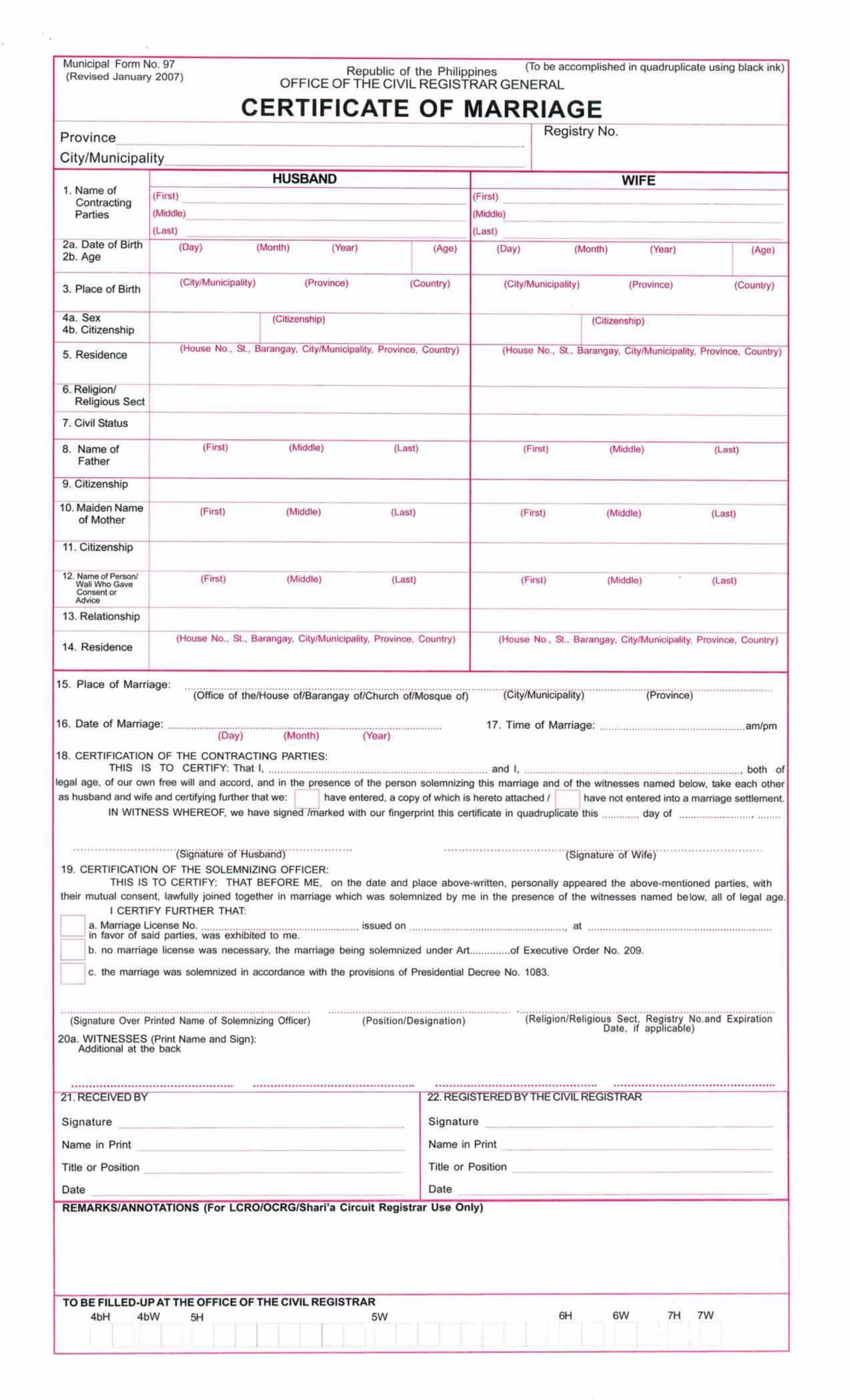





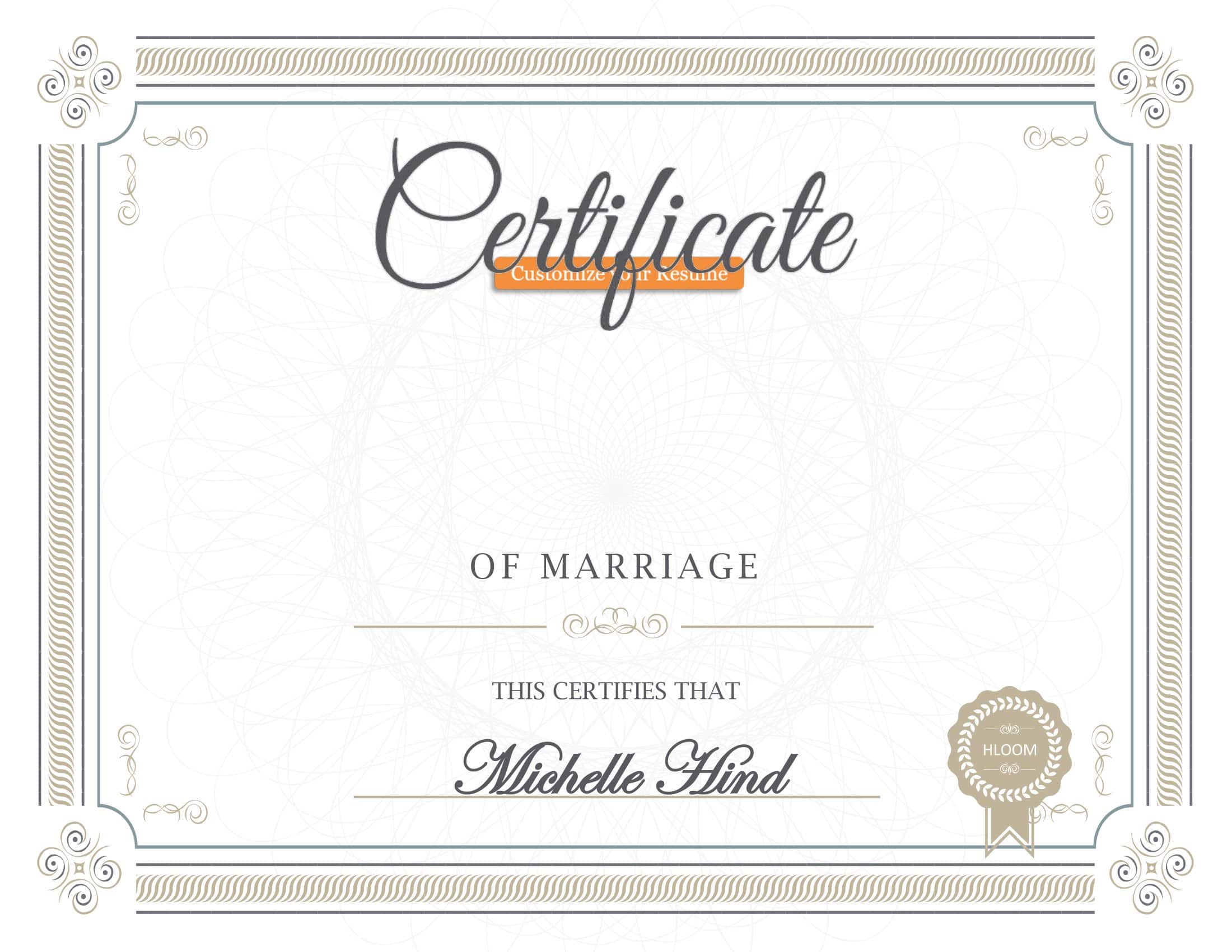




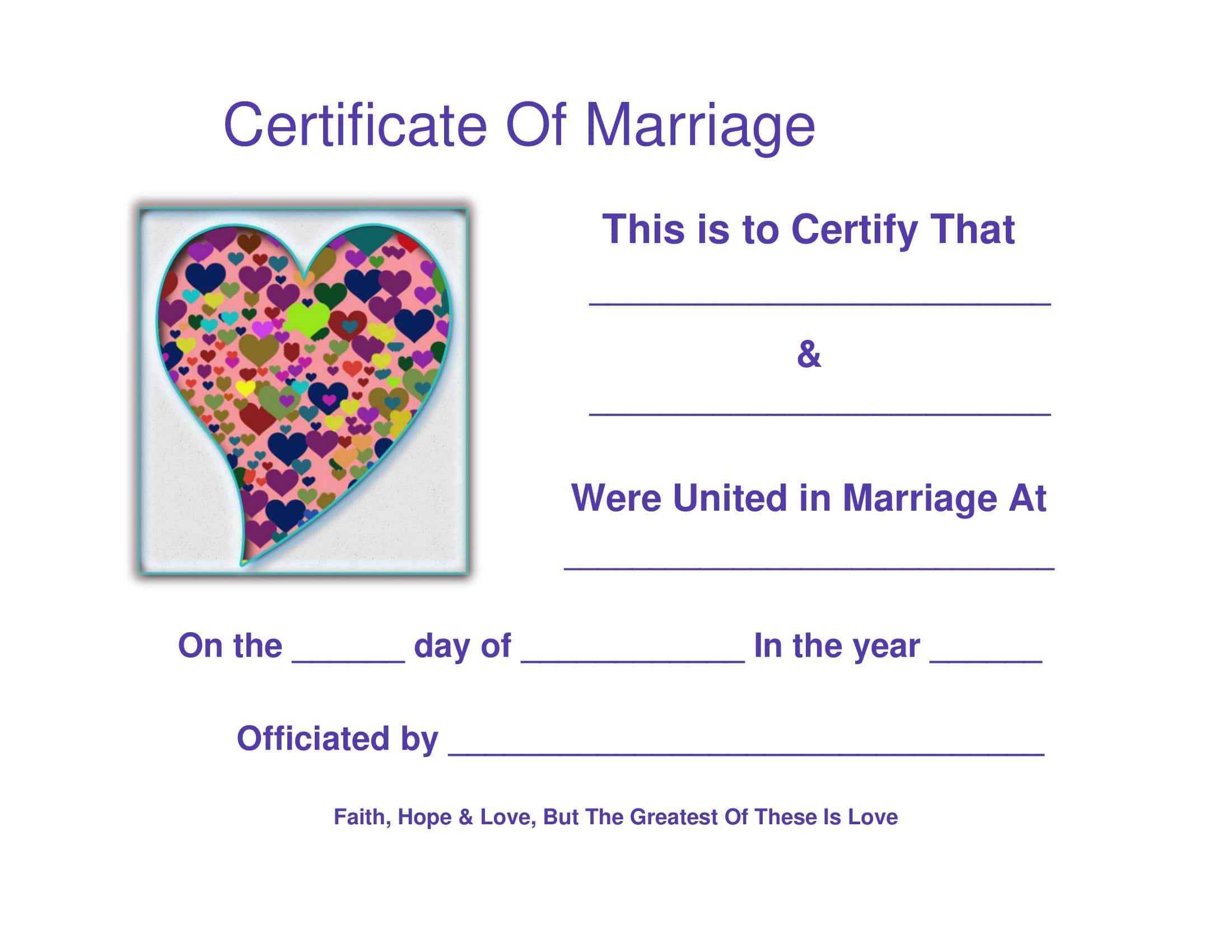




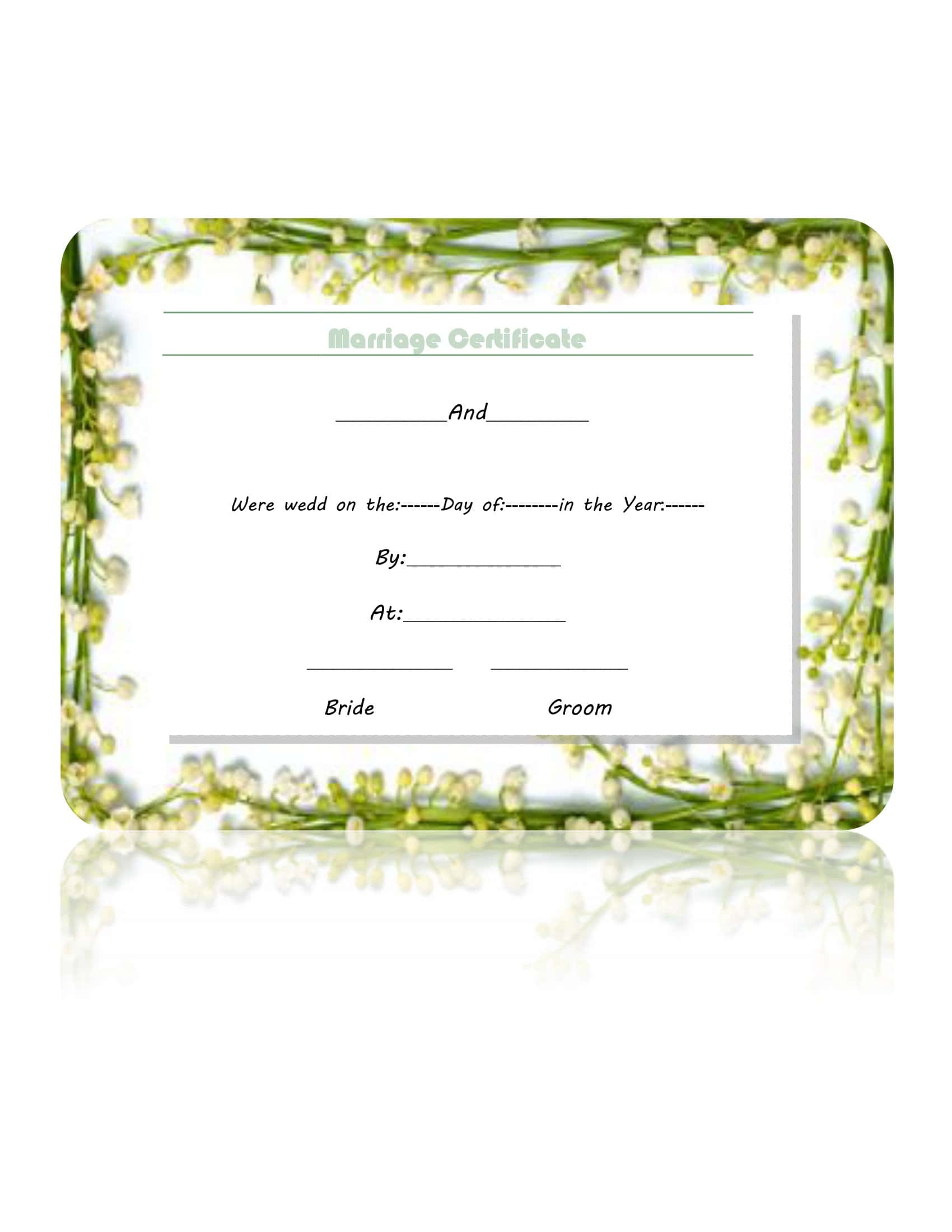



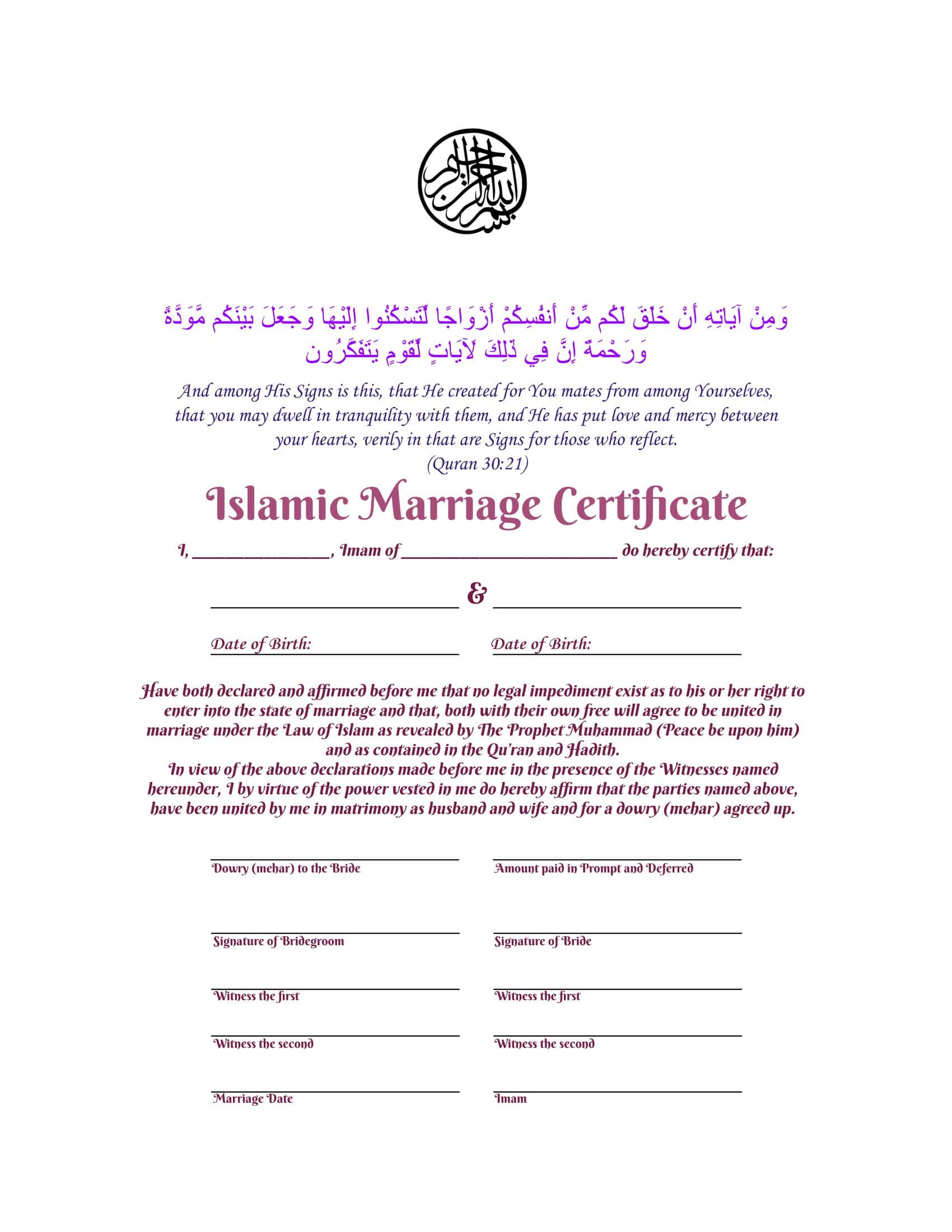


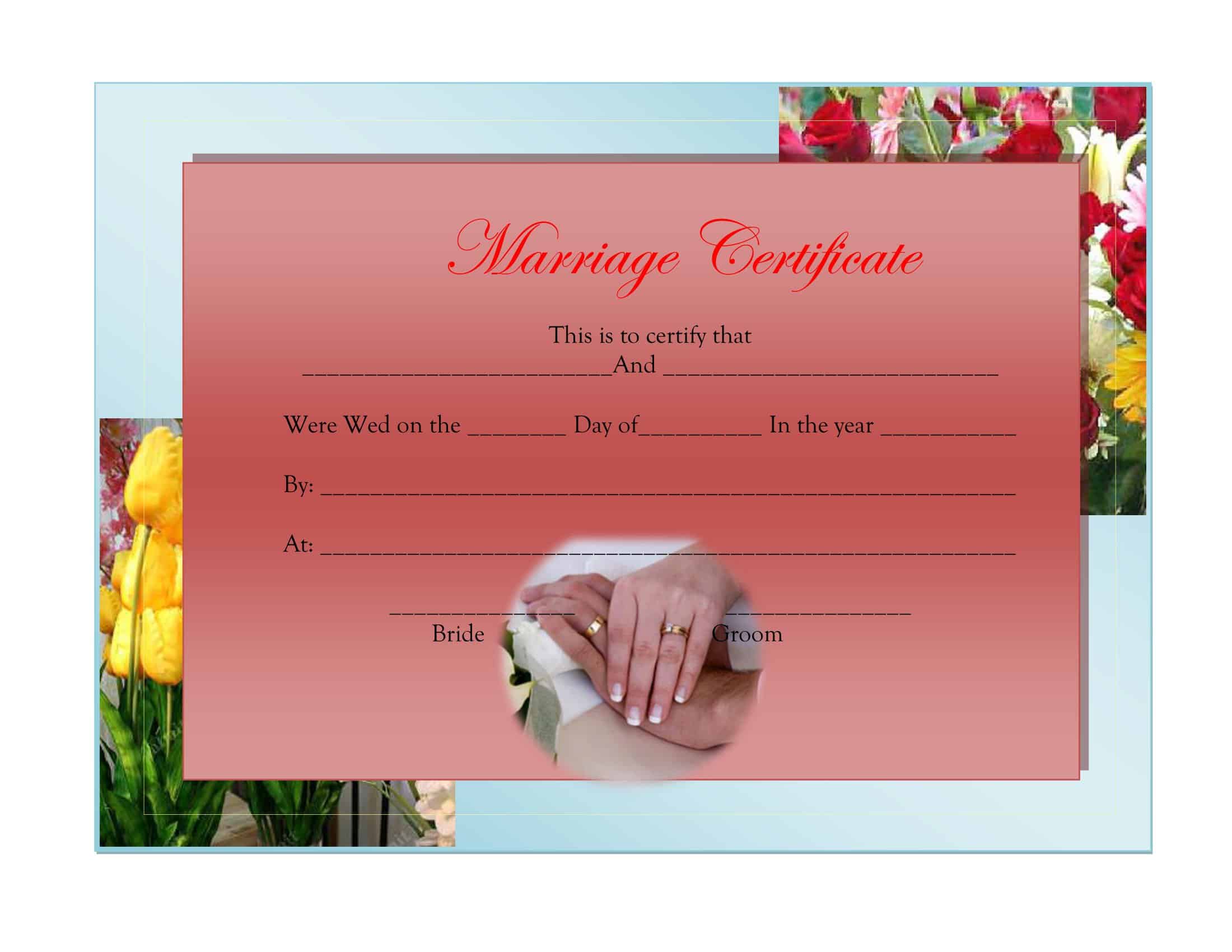



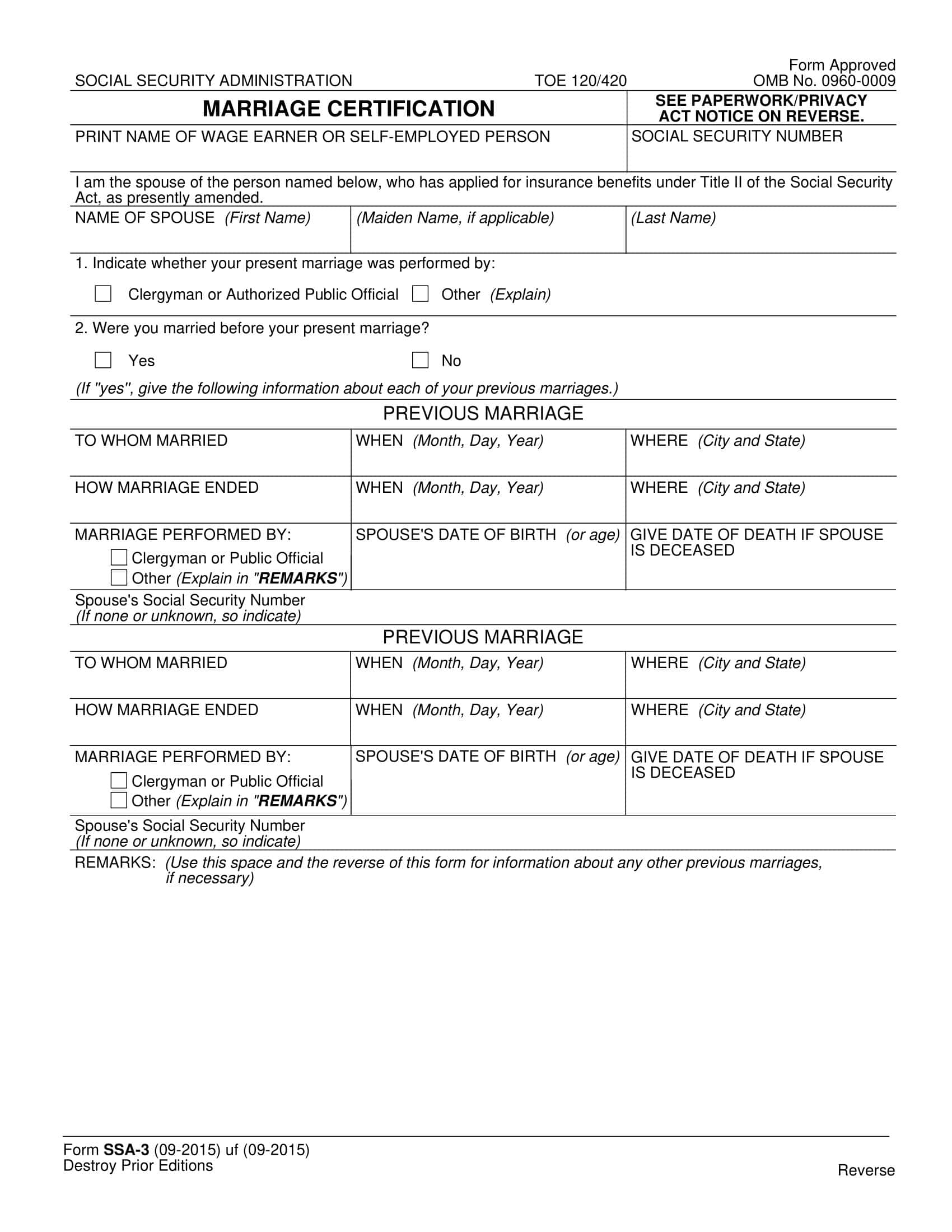

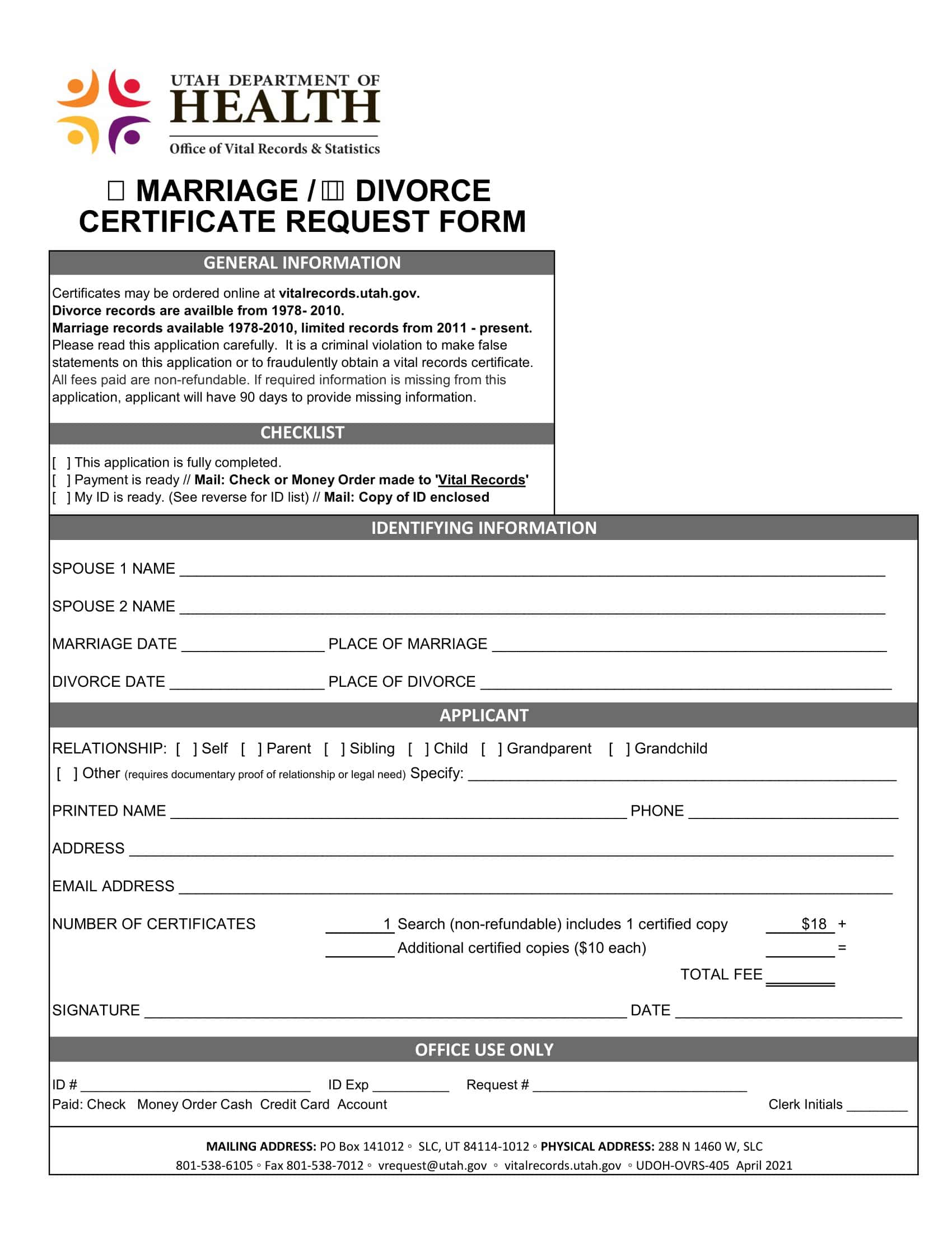



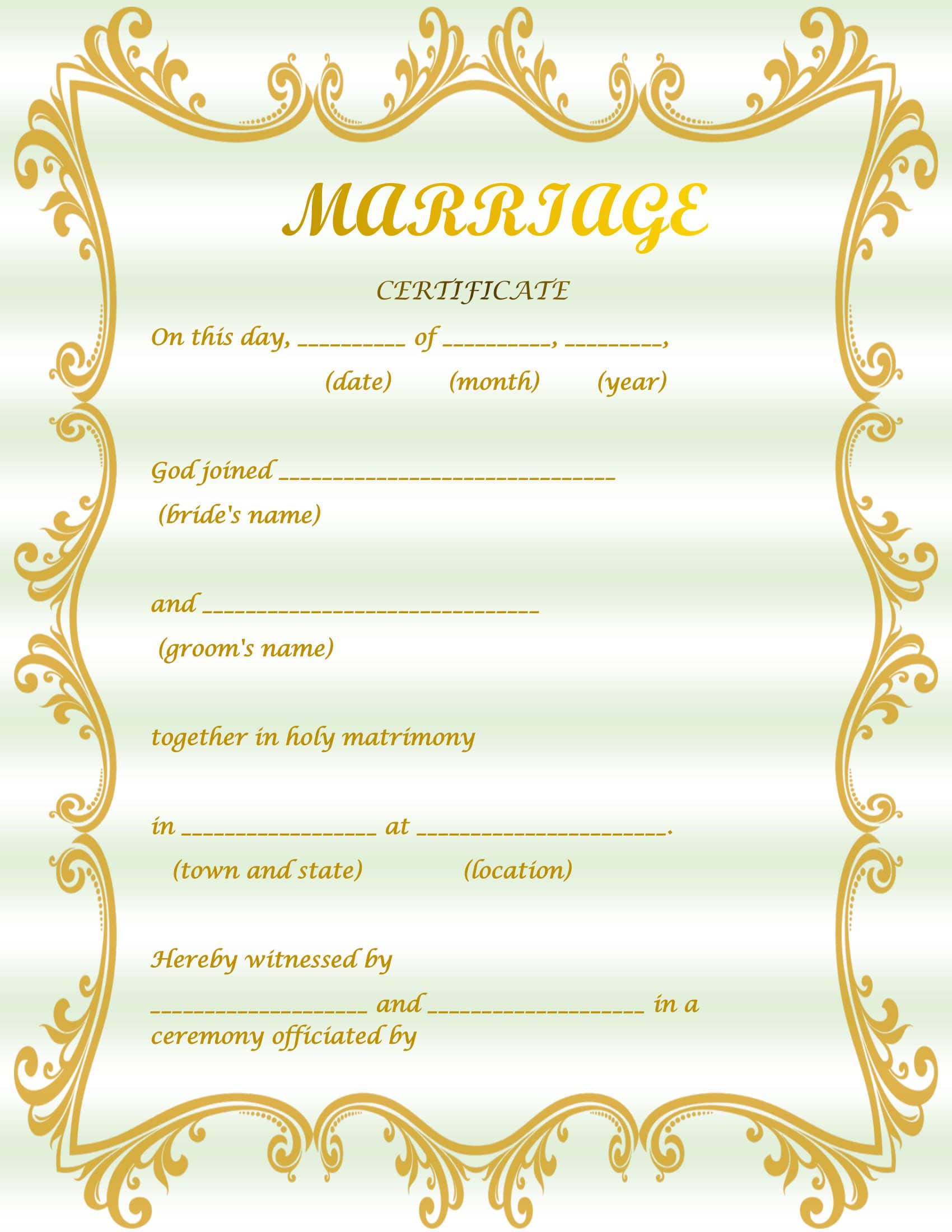







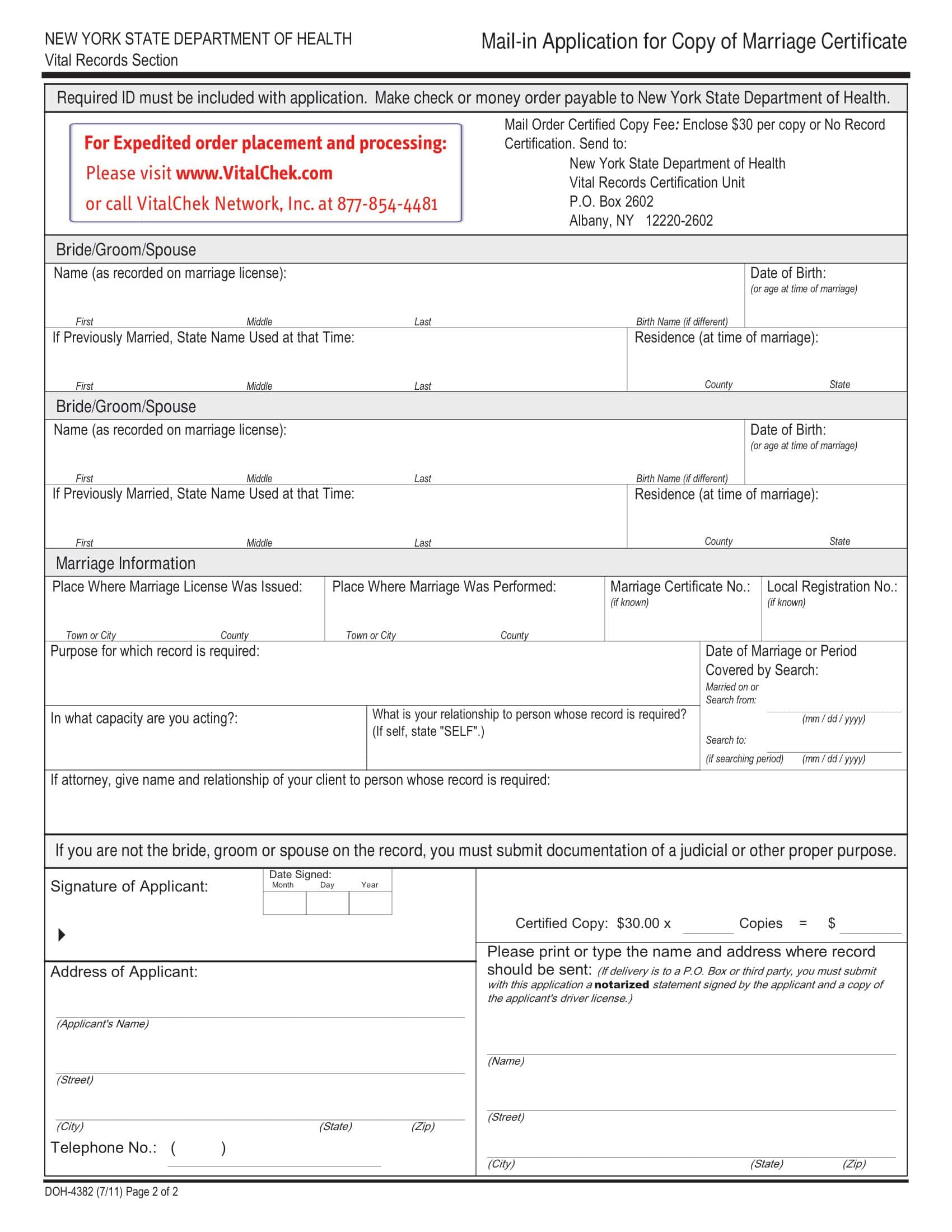

![Free Printable Estoppel Certificate Templates [PDF, Word] Tenant 1 Estoppel Certificate](https://www.typecalendar.com/wp-content/uploads/2023/05/Estoppel-Certificate-1-150x150.jpg)
![Free Printable Ordination Certificate Templates [Minister & Deacon] Word, PDF 2 Ordination Certificate](https://www.typecalendar.com/wp-content/uploads/2022/11/Ordination-Certificate-150x150.jpg 150w, https://www.typecalendar.com/wp-content/uploads/2022/11/Ordination-Certificate-120x120.jpg 120w, https://www.typecalendar.com/wp-content/uploads/2022/11/Ordination-Certificate-1200x1200.jpg 1200w)
![Free Printable Certificate of Employment Templates [PDF, Word] 3 Certificate Of Employment](https://www.typecalendar.com/wp-content/uploads/2023/01/Certificate-Of-Employment-150x150.jpg 150w, https://www.typecalendar.com/wp-content/uploads/2023/01/Certificate-Of-Employment-1200x1200.jpg 1200w)
